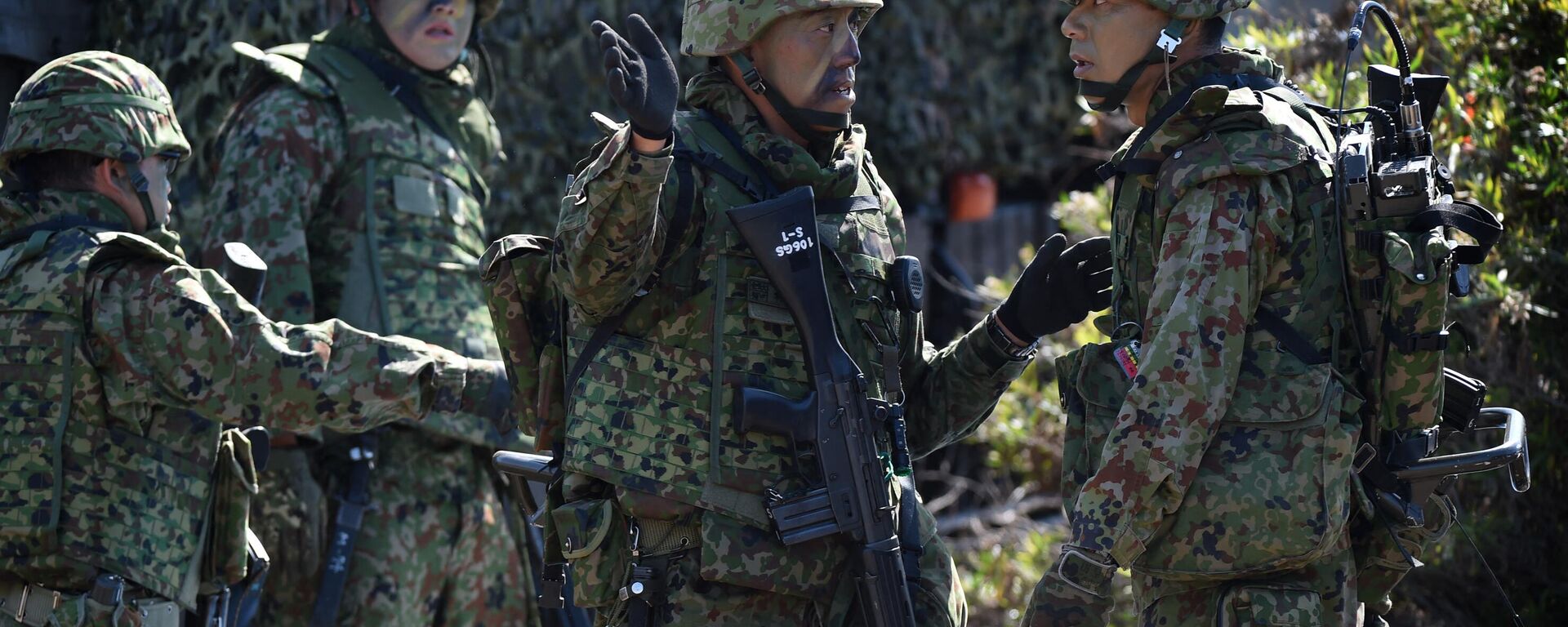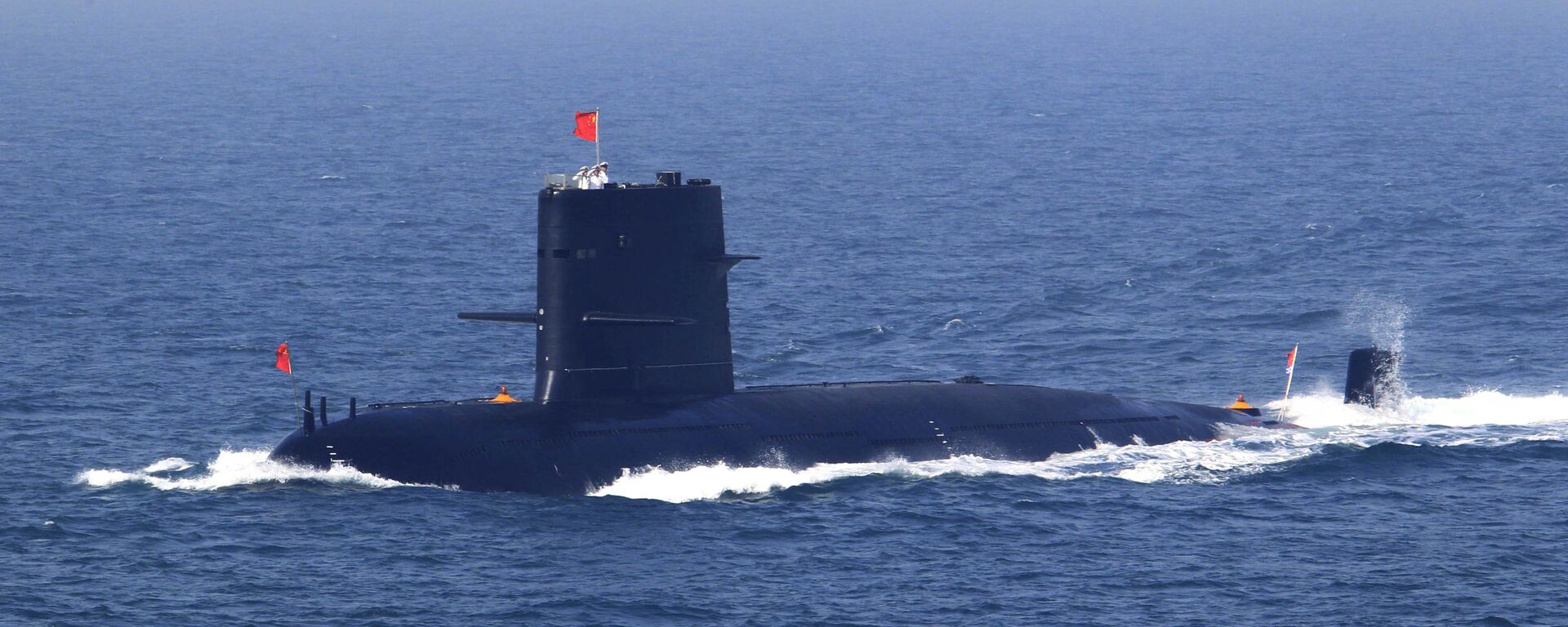https://sputnikglobe.com/20230516/chinese-japanese-defense-ministers-open-hotline-to-manage-and-control-crises-1110404682.html
Chinese, Japanese Defense Ministers Open Hotline to 'Manage and Control' Crises
Chinese, Japanese Defense Ministers Open Hotline to 'Manage and Control' Crises
Sputnik International
The defense ministers of Japan and the People’s Republic of China inaugurated a new military hotline on Monday, according to statements by both ministries.
2023-05-16T18:02+0000
2023-05-16T18:02+0000
2023-05-16T18:02+0000
asia
japan
china
hotline
quadrilateral security dialogue (quad)
https://cdn1.img.sputnikglobe.com/img/07e6/02/1c/1093453353_0:53:1280:773_1920x0_80_0_0_d06009d6011dd525d6b0f5b0f9905805.jpg
The defense ministers of Japan and the People’s Republic of China inaugurated a new military hotline on Monday, according to statements by both ministries. The hotline is part of a larger effort to maintain communications during crises that began in 2018, called the Maritime and Aerial Communication Mechanism.Chinese State Councilor and Defense Minister General Li Shangfu spoke with Japanese Defense Minister Yasukazu Hamada for about 20 minutes on the direct telephone link, exchanging their views on bilateral and defense relations, according to a statement by the Chinese Defense Ministry.Japan's Defense Ministry similarly said the communication mechanism "plays an important role" in building mutual trust and avoiding contingency. At their first meeting in three years last November, Chinese President Xi Jinping and Japanese Prime Minister Fumio Kishida declared their renewed intent to open the hotline amid rising tensions in the region.In the early 20th century, China and Japan fought several major wars, including when Japan invaded China in 1937 and occupied about one-quarter of the country, killing more than 20 million Chinese. After the Allied Forces defeated Japan and its fascist allies in Europe in 1945, Japan was occupied for 10 years and reconstructed as a liberal constitutional monarchy with constitutionally mandated neutrality.Four years after the war’s end, communist forces overthrew the Republic of China and established the PRC in Beijing, but Japan continued recognizing the RoC rump government on Taiwan until 1972, when it switched to recognizing the PRC. By the time the two nations celebrated the 50th anniversary of that deal in 2022, China had become Japan’s largest trading partner, with a total annual trade value of ¥38.4 trillion ($281.1 billion), according to Japan’s finance ministry.Earlier this month, Hayashi revealed Tokyo was "already in discussions" to open a liaison office for the North Atlantic Treaty Organization (NATO), the Brussels-based alliance of Western capitalist states.In addition to its disputes with China, Japan has also looked for Western support against the Democratic People’s Republic of Korea (DPRK), a small socialist state with a large military that enjoys tacit support from Beijing. The DPRK regularly test-fires ballistic missiles across the Sea of Japan, including several rockets that have flown over Japanese territory. Tokyo has looked to enhance its missile defense capabilities, including efforts to acquire interceptor technology and a failed bid to build Aegis Ashore bases in several coastal cities.
https://sputnikglobe.com/20230316/are-japans-best-known-brands-reluctant-to-join-tokyos-military-buildup--1108443073.html
https://sputnikglobe.com/20230515/us-and-china-had-secret-submarine-showdown-near-hong-kong-around-jan-6-events---report-1110384416.html
japan
china
Sputnik International
feedback@sputniknews.com
+74956456601
MIA „Rossiya Segodnya“
2023
News
en_EN
Sputnik International
feedback@sputniknews.com
+74956456601
MIA „Rossiya Segodnya“
Sputnik International
feedback@sputniknews.com
+74956456601
MIA „Rossiya Segodnya“
china-japan hotline, china-japan relations, china and japan talks
china-japan hotline, china-japan relations, china and japan talks
Chinese, Japanese Defense Ministers Open Hotline to 'Manage and Control' Crises
Although it is constitutionally a neutral nation, Japan has increasingly looked to expand its military in recent years, acquire advanced offensive weapons, and even to modify its neutral stance. Washington and Ottawa have also initiated talks to more closely bind Japanese defense efforts to regional allies, like South Korea and Australia.
The defense ministers of Japan and the People’s Republic of China inaugurated a new military hotline on Monday, according to statements by both ministries. The hotline is part of a larger effort to maintain communications during crises that began in 2018, called the Maritime and Aerial Communication Mechanism.
Chinese State Councilor and Defense Minister General Li Shangfu spoke with Japanese Defense Minister Yasukazu Hamada for about 20 minutes on the direct telephone link, exchanging their views on bilateral and defense relations,
according to a statement by the Chinese Defense Ministry.
"The establishment and operation of the direct telephone link is a practical measure to implement the important consensus reached by the leaders of the two states," the ministry added. "It will effectively enrich the communication channels between the defense departments of the two countries, strengthen the capabilities of the two sides in managing and controlling maritime and air crises, and help further safeguard regional peace and stability."
Japan's Defense Ministry similarly said the communication mechanism "plays an important role" in building mutual trust and avoiding contingency. At their first meeting in three years last November, Chinese President Xi Jinping and Japanese Prime Minister Fumio Kishida declared their renewed intent to open the hotline amid rising tensions in the region.
Japan and China have sparred over control of a group of unpopulated but strategically-placed islands in the East China Sea that Beijing calls the Diaoyu Islands and Japan calls the Senkakus, and their militaries sometimes rub shoulders in various sea lanes around the region.
In the early 20th century, China and Japan fought several major wars, including when Japan invaded China in 1937 and occupied about one-quarter of the country, killing more than 20 million Chinese. After the Allied Forces defeated Japan and its fascist allies in Europe in 1945, Japan was occupied for 10 years and reconstructed as a liberal constitutional monarchy with constitutionally mandated neutrality.
Four years after the war’s end, communist forces overthrew the Republic of China and established the PRC in Beijing, but Japan continued recognizing the RoC rump government on Taiwan until 1972, when it
switched to recognizing the PRC. By the time the two nations celebrated the 50th anniversary of that deal in 2022, China had become Japan’s largest trading partner, with a total annual trade value of ¥38.4 trillion ($281.1 billion), according to Japan’s finance ministry.
Still, Tokyo remains a staunch US ally and has pulled closer to Washington as the Pentagon prepares for what it calls "great power competition" with Russia and China. Japan has been included in the Quadrilateral Security Dialogue (Quad), a bloc with the US, Australia, and India, and more recently Canada has pushed for a similar bloc involving Japan and South Korea.
Earlier this month,
Hayashi revealed Tokyo was "already in discussions" to open a liaison office for the North Atlantic Treaty Organization (NATO), the Brussels-based alliance of Western capitalist states.
In addition to its disputes with China, Japan has also
looked for Western support against the Democratic People’s Republic of Korea (DPRK), a small socialist state with a large military that enjoys tacit support from Beijing. The DPRK regularly test-fires ballistic missiles across the Sea of Japan,
including several rockets that have flown over Japanese territory. Tokyo has looked to enhance its missile defense capabilities, including efforts to acquire interceptor technology and a failed bid to build Aegis Ashore bases in several coastal cities.




